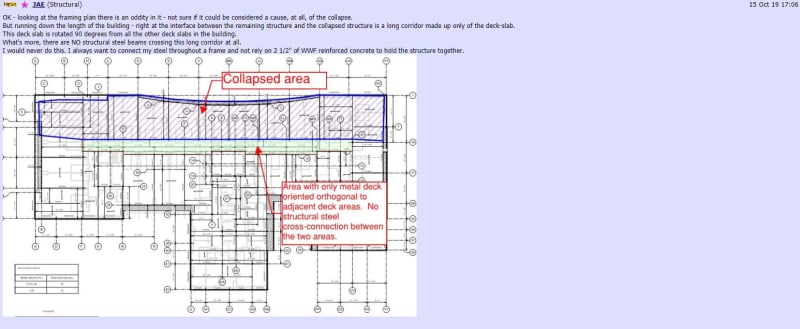IceNine
Structural
- Feb 24, 2006
- 282
GPR tech,
In looking at the photos, it appears they switched to moment frames at the cores.
In looking at the photos, it appears they switched to moment frames at the cores.
Follow along with the video below to see how to install our site as a web app on your home screen.
Note: This feature may not be available in some browsers.


Isn't that why they issue (or deny) building permits in the first place?OHIOMatt said:3. The building department. While they are not structural engineers, they should have enough knowledge to see obvious design deficiencies, at least to the point of asking questions, requesting calculations for validation, ect.
MOJOJOHN said:Also I was discussing this area with a very large building contractor today and it was his feeling that the crane attachments would likely damage the otherwise un-reinforced strip as the crane moved under load, possibly breaking spot welds.
